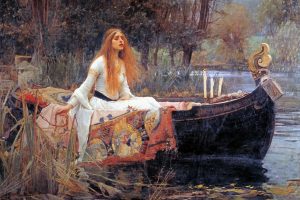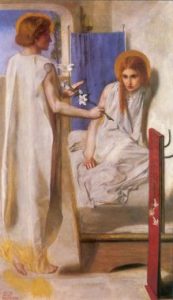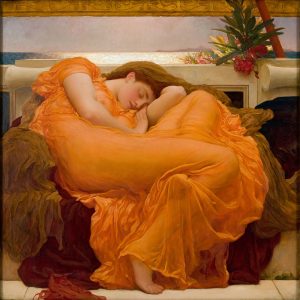The Pre-Raphaelites were a secret society of young artists, founded in London in 1848. They opposed the Royal Academy’s promotion of the ideal as exemplified in Raphael‘s work.

Image source: https://search.creativecommons.org/photos/db513b16-f172-4cd5-8fd6-6a05f63cc48d
The Pre-Raphaelites were a large collective of Victorian illustrators, painters, poets, and designers that lasted from 1848 until the turn of the century. Their work has prioritized atmosphere and mood over fiction, focusing on medieval subjects, female beauty, artistic introspection, sexual desire, and altered states of consciousness.
The origin

Pre-Raphaelitism began in 1848 when a group of seven young artists united against what they believed to be an artificial and gentle approach to painting taught at the Royal Academy of Arts in London. They were called ‘Pre-Raphaelite Brotherhood’ (PRB), alluding to their preference for late medieval and early Renaissance art that came ‘before Raphael’. The painters were: Dante Gabriel Rossetti, John Everett Millais, William Holman Hunt, James Collinson, and Frederic George Stephens. The non-painters were the sculptor Thomas Woolner and the Brotherhood secretary William Michael Rossetti, Dante Gabriel Rossetti’s brother. Inspired by the work of ancient masters such as Van Eyck, Memling, Mantegna, Giotto, and Fra Angelico, and following a program of ‘truth to nature’, the artists sought a return to simplicity and sincerity of the subject and style.
Which were the main features of their paintings?

Image source: https://it.wikipedia.org/wiki/
Characterized by flattened perspective, sharp outlines, bright colors, and close attention to detail that flouted classical conventions of symmetry, proportion, and carefully controlled chiaroscuro, early PRB paintings of religious subjects such as Hunt’s A Converted British Family’, Millais’s Christ in the House of His Parents and Rossetti’s Ecce Ancilla Domini (1850) shocked critics with a hyper-realism perceived to be at odds with the sacred events portrayed. The 1850 Royal Academy Exhibition inaugurated what would remain an antagonistic relationship between establishment critics and the Pre-Raphaelites. Critics were particularly dismayed at the hints of Tractarianism and Romishness they detected in the detailed, ecclesiastic symbolism of Millais’ picture. They were further horrified by the painter’s blasphemous depiction of the Christ child as a red-headed member of an unidealized laboring-class family. Both Hunt’s and Millais’s paintings hinted at the breakdown of the social order, a worrying subject during a period where recent revolutions in Europe threatened to spread to Britain.
Early doctrines
The early doctrines of the brotherhood, as defined by William Michael Rossetti, were expressed in four statements:
- have authentic ideas to express;
- study Nature carefully;
- to sympathize with what is direct, serious, and felt in the previous art, excluding what is conventional and self-congratulatory and memorized;
- produce good images and statues.
Later development of Pre-Raphaelites

Image source: https://en.wikipedia.org/wiki/Frederic_Leighton#/media/File:Flaming_June,_by_Frederic_Lord_Leighton_(1830-1896).jpg
The movement influenced many later British artists in the 20th century. Rossetti was seen as a precursor of the larger European Symbolist movement. In the 20th century, artistic ideals have changed, and art has moved away from the representation of reality. Because the Pre-Raphaelites were obsessed with portraying things with near-photographic precision, their work was devalued by many painters and critics. After World War I, British Modernists associated Pre-Raphaelite art with the repressive and backward times in which they had grown up. In the 1960s there was a great revival of Pre-Raphaelitism. Exhibitions and catalogs of works, culminating in a 1984 exhibition at the Tate Gallery in London, have re-established a Pre-Raphaelite canon of work. Among many other exhibitions, there was another major exhibition at Tate Britain in 2012–13.
